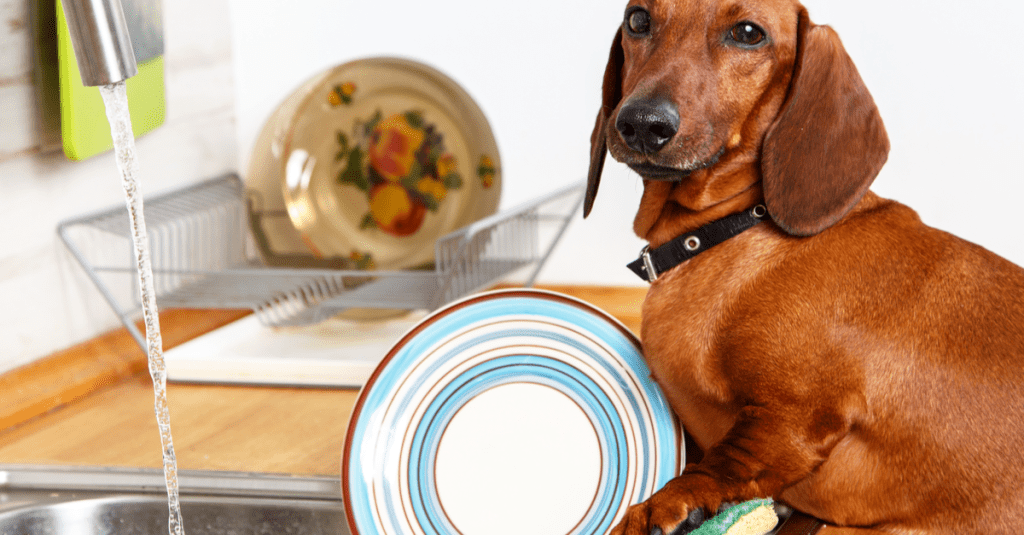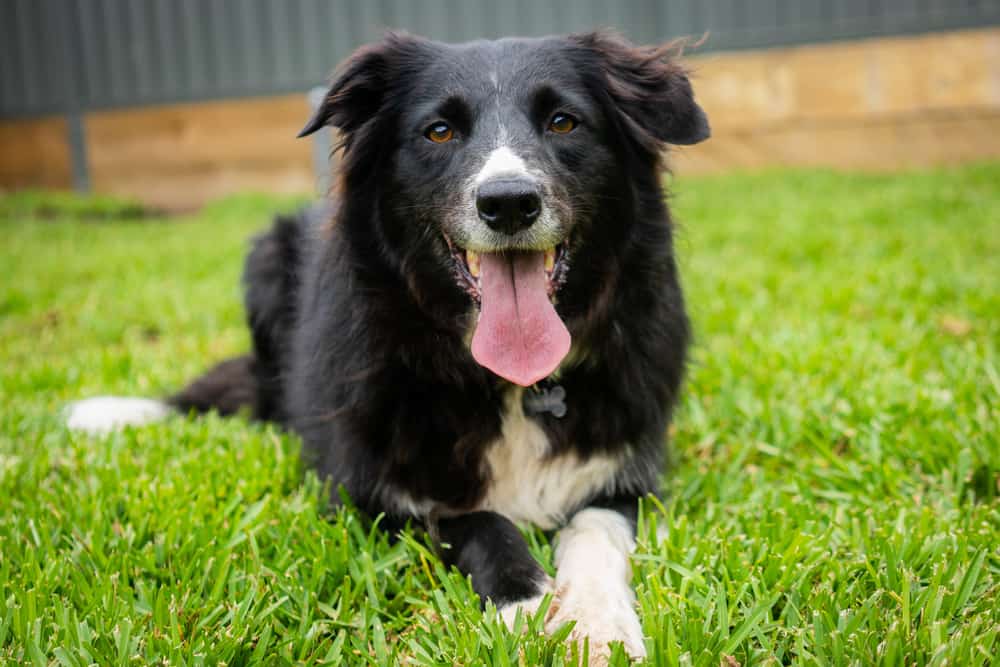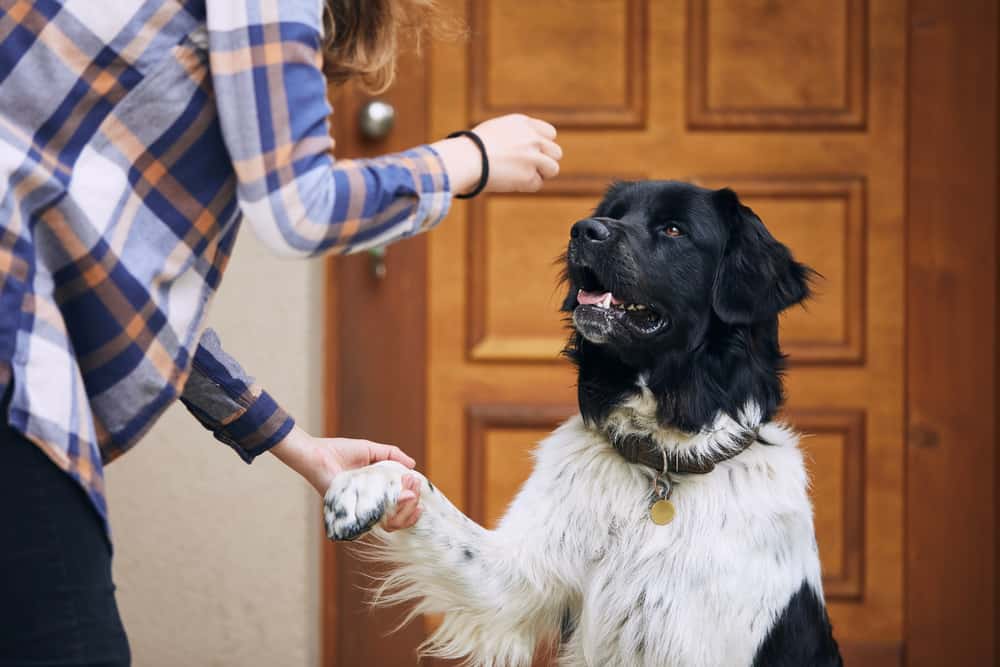“This post contains affiliate links, and I will be compensated if you make a purchase after clicking on my links.”
By Katya Lidsky
With my feet on the teal mat from Costco, I stared at our drying rack of “clean dishes,” at the knife sticking out, half of it still smeared with peanut butter. Chunks of peanuts glistened under the late afternoon sun that was coming in through the kitchen window. It was Extra Crunchy Skippy, and I was a creamy gal all the way. This meant there could only be one culprit. In the reflection on the metal basin of the sink, I saw the rage flash in my eyes as a sneer spread across my lips. My husband had once more deemed this knife to be “clean enough.”

You guys, there is no qualifier when it comes to cleanliness, there is no “enough,” am I right? Either a thing is clean or a thing is not clean, and thus it is dirty. This utensil could not be put back in a drawer because it was dirty.
I wanted to scream. I wanted to bang my head on the marble counter. But how many times had I yelled at my husband and gotten upset? How many times did I wave the disgusting knife in the air, nagging? Was my plan to keep doing the same thing over and over again and expect different results? He and I, we love each other, we respect each other, we communicate. So why, oh why, couldn’t I reach him? Why couldn’t he hear me? Why didn’t he clean the %$@#* knife right?
A bark captured my attention then. It was Jillie, our new foster dog, a black Border Collie mix who I can only describe, with fondness, as bonkers. She wanted her dinner, but I knew better than to respond to her when she was demanding at me like this. I wouldn’t get mad because mad was energy, mad was reinforcement, mad was attention. So I ignored her, waiting for her to be quiet to reach for the food bowl. She barked again. Now I turned away completely, giving her my backside until she got the message that it wouldn’t work. Finally, the silence came. Yes!
I stepped closer to the bowl. She stayed quiet. I said, “good girl,” and a light seemed to go off in her head: me quiet sitting = me eat.
In dog training, we call this a “teachable moment,” when you remove reinforcement because a dog does a behavior you do not want and then immediately give back reinforcement when they change and offer a new behavior that you do want. If the new behavior is acceptable in any way or leads in the direction of the desired behavior, in that micro-instant you give the dog something they want as well, intentionally pairing “this” with “that.” Usually what a dog wants is either you – your eye contact, your voice, your touch, your closeness, your play – or comes from you, like food. And so, a foundational concept of learning is this: if a behavior keeps happening, it is being reinforced in some way, whether on purpose or by accident, because someone is getting what they want.
A light went off in my head at this moment too. As a certified dog trainer, I knew that if I could train dogs, I could train my husband! I’d have to be a ninja about it, I’d have to be subtle. He likes to be considered a man and not a dog. Yet as I watched our 57th foster dog lick her bowl clean, it dawned on me that I was perpetuating what Eric did by giving him negative attention for it. (Yes, you read that number right. We have fostered over 50 shelter dogs and helped them find forever homes so perhaps my husband puts up with more from me than I do from him, but that’s a subject for another article, thank you very much.)
The good news was that I had a plan for how to stop the behavior I didn’t want: just as I followed shaping protocols when I wanted a pup to learn a new behavior, I decided to shape my partner, bearing a single mission in mind – that he clean the damn peanut butter knife correctly. Of course my husband had no idea about my plan which is precisely what made it both exciting and fun before it even began!
What is shaping? Thank you for asking. Shaping is learning through successive approximations. The theory behind it is that if you shape behavior, you increase the movement towards the result you want because behavior is always variable. The trick is in being there to catch and reinforce any alterations in behavior towards what you want. For example, when I wanted Jillie Bean to learn how to lie down, I asked for a sit since she already knew that, then pointed to the ground. She looked down, I treated that. The next time she crouched down, I treated her. Eventually she laid down partially, and again, I rewarded her until a full down position was the obvious final choice. Major reward!

Shaping requires making peace with how things truly change, which is with patience, a little faith, and a lot of respect for another creature. There is no instant gratification in shaping; it’s creative and demands your full attention while you, the shaper, give the shapee the benefit of the doubt that they will get it. Through this gradual process where even tiny bits of improved behavior get praised, a powerful connection grows between two beings. It takes mindfulness to shape behavior. It takes slowing down. It takes work and although it’s not hard, it’s different.
Different can be difficult in and of itself.
How to train my husband, exactly, I wasn’t sure where to start, but I knew the answers were with the dogs because for me dogs are always the answer. Dogs are simpler to train though because they don’t lug around a constantly-spinning intellectual mind that questions what this means, what that means, why we’re alive, and if the tone of a text message sounded too snarky. Dogs associate and accept. We humans often make it more challenging.
I thought about Jillie, about how when she first arrived at our house, she tried to eat my daughter’s hair and climb the walls in an attempt to escape. The first thing I did with Jillie, as lame and boring as it sounds, was teach her to go to her bed by shaping the behavior. The lightest movements she presented towards the bed – turning her head to look at it, walking close to the bed, smelling it – were reinforced with a treat. Eventually she went and sat on her bed, and I rained food down on her while teaching the command, “go to your bed,” pleased that we’d achieved what we set out to do. She still tried to eat my daughter’s hair, but she had a calm place of her own to rest now. Progress!
So as far as I could see, the approaches I could take to change Eric’s behavior were to (a) divorce him and never deal with the knife again, which was a little drastic (b) continue punishing him by yelling, which was tempting but obviously futile (c) reinforce him with a piece of chocolate or compliment any time he cleaned even a speck of the peanut butter more than he had before, and in this way, shape the behavior I did want. Ding Ding Ding!
On day one, all I did was find my husband when he was at the sink, half-assing the dishes, and reinforce his dish-washing with a touch to his back. Not because he was scrubbing adequately, because he wasn’t, but because I had committed to training him. I bit my tongue and resisted the urge to remind him that there was no actual peanut butter cleaning fairy. That the fairy was always me!
Instead, when he picked up the utensil, I patted his back. He rinsed the knife under the water, another pat. Then I waited for him to leave the room so I could secretly redo the job. I know, I know – I suck. At least I didn’t make him watch me do it just to prove to him that I could make that knife sparkle. Day one was a success.
On day two, I planned to do more of the same, grin and bear it for the sake of the experiment, only I noticed that he was trying harder than I’d given him credit for. There were lots of dishes to clean and he did them all without complaining. He even wiped the dining room table and the entire counter. And the peanut butter knife he had used earlier to make his lunch, which was still in the sink at dinnertime, did get hugged by a sponge. I happened to spot Jillie asleep on her bed too, and that was when it really hit me: Eric had been doing these chores all along, he’d been trying, I’d just been noticing what he hadn’t done to my liking. I am admittedly a hard to please individual, not only by other people but by my own self.
This took the wind out of me. I realized that whether I had intended to or not, if somebody I loved (four-legged or two-legged) kept doing a thing that annoyed me, then there was some way in which I had been part of its continuation, there was some way it was serving me. Did it suck to read that as much as it sucked to type it? Because it definitely sucked to type it. I mean, honestly, when I can’t stand something about a person, I prefer to believe it’s their fault and leave it at that. This meant that some of the dirty knife situation was my fault!
I stared at my husband’s toes because I love toes and toes make me feel tender, just like dogs make me feel tender. And I knew what really needed to happen. I needed to reinforce myself to choose tenderness and appreciation for his efforts. I was trying to train a human like a canine, but mostly I needed to train myself out of my own bad habit to search for what was wrong. For his sake. For my own sake.

And wasn’t all dog training like that? Wasn’t I always training the owner more than I was training the dog?
On day three, Eric did the dishes in the evening while singing, “My Shot,” from Hamilton (okay, fine, I was singing it and he was tolerating me.) Knowing now that I’d placed my own perfectionistic standards squarely on his shoulders, I forced myself to sit on the couch in the living room and read a book. And ya know what? I lived through the knowledge that those dishes were maybe not be as clean as they would be if I did them all on my own, and I didn’t die from this fact, and the world didn’t end. I didn’t even check the stupid knife.
“Thanks for doing dishes!” I called out.
He walked over to me. “Look, babe!” he said, holding up the knife, which other than a thin streak of tan, was fairly clean, or clean adjacent. I could see the pride in his face, and so I kissed that face. It took a lot of effort to validate him, knowing it was not completely, perfectly gleaming, but Eric was who he was, and he did not care about the exactness of the chip clip on the corn dippers bag or if a plate was wet when he removed it from the dishwasher and put it away. He left well enough alone, he wanted life to be easy and enjoyable, and I knew these things when I married him. It’s actually why I married him. And if I kept praising him for being enough and for trying, he would improve, he’d be encouraged to do it better over time.
Reward-based training is powerful precisely because it feels good. When I used treats and affection to reinforce desired behaviors in Jillie, it worked, but also it worked on me. It helped me to accept her potential, help her meet it, and not ask for more than what she could give. I didn’t have a right to expect her to be different than who she was. With dogs, I’d been able to let go of my rigidity, but here I was learning to let go with my husband as well. It’s not that the knife stopped being dirty or important. It’s that he didn’t need to be perfect so that I didn’t need to be perfect. It’s that in training dogs, I learned to apply the lessons to train my partner, which ultimately led me to training myself.

I want to acknowledge that this sounds like another thing TO DO. And if you’re thinking that, I get it. I am a mother. I am a questionably ethical wife. I have a big pack of dogs! My parents constantly call me to talk about either lentil recipes or mutual funds, and my sisters and I text so much I have carpal tunnel. I still need to hustle hardcore to make any of my dreams come true and I can’t imagine getting pulled in another direction or having another task to check off my daily list.
But positive dog-training as applied to your relationships is worth the work because it can improve your life, in large part thanks to a pivotal life-changing perspective, which simply put is this: WHATEVER YOU FOCUS ON GROWS. We spend so much time being involved in the things we don’t want to happen in the first place, and tend to ignore, overlook, or even dismiss what we like. I’m in no way an anti-feminist imploring someone to be mousy or ignore your requests and opinions. We are allowed to be angry, even irrational, to take up space however we take up space! I’m aware that sometimes it feels too exhausting, like it would require too much from us to be positive, but what makes you want to change? When someone is encouraging and supporting you, catching you in all your little wins, noticing your glory and your goodness, or when someone is being a caca to you? Are you a caca to you? We don’t need to be cacas to ourselves or anybody for a moment longer!
I am also not asking you to throw a parade because a guy took out the trash. But paying attention to what my partner did right was good for him, it made him want to do more of it, and most importantly, it was good for me, it made me stop creating more work for myself. It made me search for my reflection in a utensil, and in it I was smiling. It made aware that the best training – with other people, with dogs – is the kind in which you change along with your subject, like it’s a dance. Not, become this for me, but we become together. Harmony.
Modeling this type of constructive outlook in my home has increased a vibe of a decency that’s created a better space for all of us. When my husband brushes my kids’ hair and somehow makes more tangles instead of combing out the ones that already exist, I say, “Thanks for doing hair, their heads smell great!” because I know the hair-combing job royally sucks and he was taking his turn with it. When my kids put away their own clothes and it’s messier than it was before I did laundry, I say, “Awesome, you took care of your stuff!” When I eat eleven Thin Mints instead of twenty, I think, Progress, not perfection instead of, Bad girl, bad! Eventually, maybe I’ll reach for an apple, but the road to get me there will be paved with a hell of a lot more praise.
Mindfully choosing what I want to reinforce has gotten me more of it. With dogs, with partners, with myself. It’s made my life a magnet for positivity because I love my husband. He loves me. I’m doing my best to reinforce love. Thank dogs for that.
Besides, I’ve designated one knife to be his for all his peanut butter endeavors. He can deal with it however he likes.
Katya Lidsky is a writer, host of The Animal That Changed You podcast, and an all around dog obsessed individual. She lives in Austin with her family and an endlessly rotating cast of foster pets (much to her husband’s chagrin.) She hopes to meet you someday either at the animal shelter or by the dessert table. She’ll be at one or the other. Follow her at @KatyaLidsky.



















frank bare
Nov 23, 2021 at 3:51 am
my mom bought a new water bowl for our dog. loren was very happy about this. I think it will work for you. They gave me a 20% discount code. I don’t know how valid it is. if you want to have a look. odinspet.com code: blackfriday